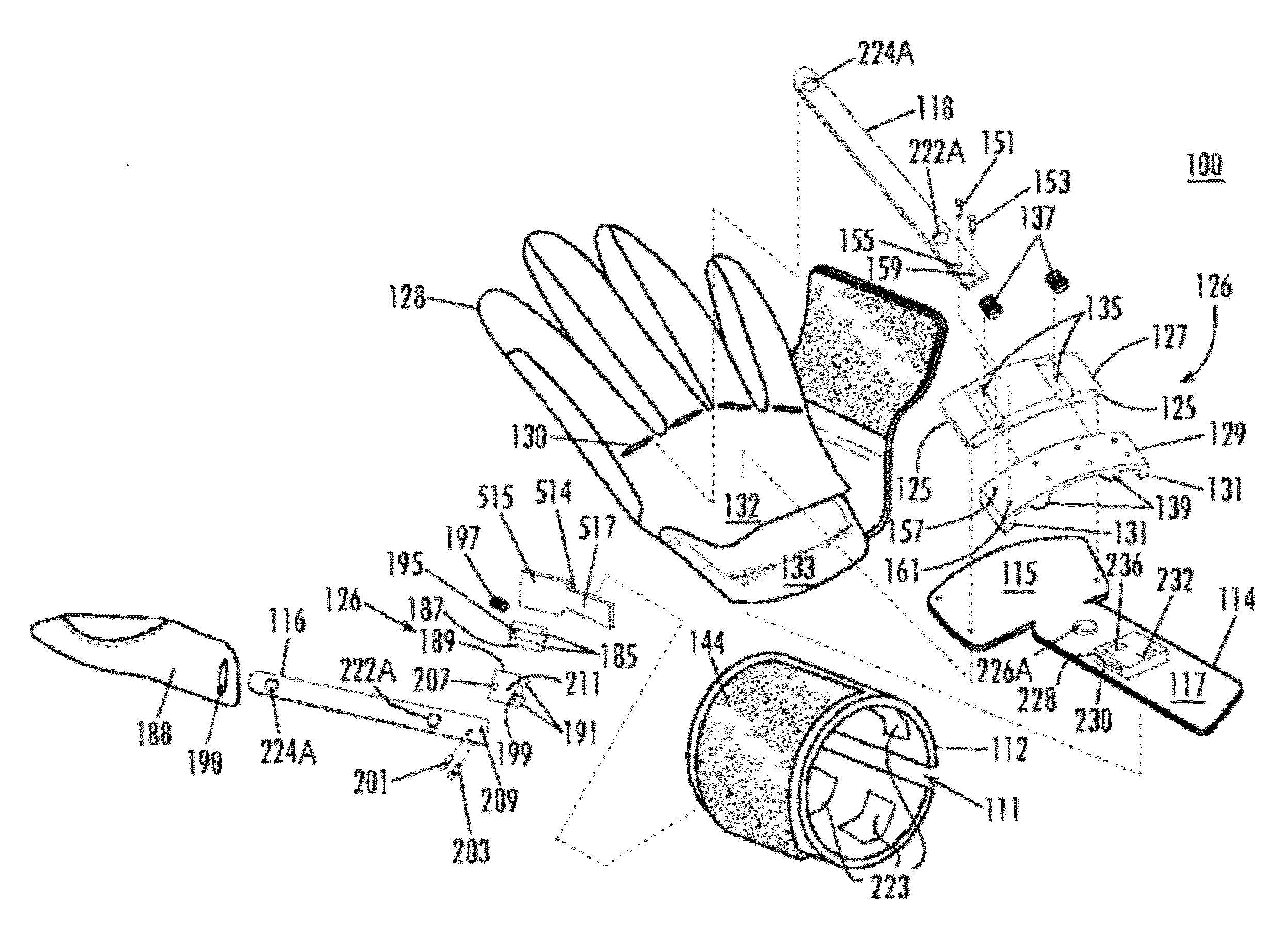Orthotic device
a neurological rehabilitation and electrode technology, applied in the field of electromechanical enabled neurological rehabilitation devices, can solve the problems of increased tone or hypertonicity, inability to extend the wrist or fingers to grasp an object, and inability to use the cuffs when practical,
- Summary
- Abstract
- Description
- Claims
- Application Information
AI Technical Summary
Problems solved by technology
Method used
Image
Examples
second embodiment
[0063]Referring to FIG. 11B, a finger tensioner is shown having a finger cap 400 moveably coupled to a flexible longitudinal spine 434. Additionally, a plurality of support uprights 430A and 430B are rigidly coupled to flexible longitudinal spine 434 so that each upright does not move relative to the spine. Spine 434 may be formed from various suitable polymers and elastomers, or some combination thereof. When a finger is moved into flexion, uprights 430A and 430B become spaced apart as the spine flexes, while a tension cable 428 provides restoring force. Tension cable 428 may be coupled to handpiece spindle 376 (FIG. 10) similar to the previous embodiment. Loops 432 formed on each upright act as guides for tension cable 428, and also act as anchor points so that the restoring force at each knuckle can be adjusted.
third embodiment
[0064]Referring to FIG. 11C, a finger tensioner is illustrated having a finger cap 400B coupled to a plurality of longitudinal plates 436, 442 and 444. Each longitudinal plate is positioned adjacent a respective proximal, intermediate and distal phalange. Intermediate each longitudinal plate is a flexure 440 so that two adjacent flexures are positioned at each interphalangeal joint. One knuckle flexure 438 is positioned proximate the finger knuckle. Thus, as a finger is moved into flexion flexures 440 become compressed building restorative force between the adjacent flexures. In one preferred embodiment, the flexures are formed from spring steel. However, it should be understood that in other embodiments, the flexures and longitudinal plates may be formed from any suitable material.
[0065]Referring to FIG. 11D, one preferred embodiment of a thumb tensioner 310 is shown coupled to hand support section 302 by a ball and socket joint. Referring to FIG. 11E, another preferred embodiment ...
PUM
 Login to View More
Login to View More Abstract
Description
Claims
Application Information
 Login to View More
Login to View More - R&D
- Intellectual Property
- Life Sciences
- Materials
- Tech Scout
- Unparalleled Data Quality
- Higher Quality Content
- 60% Fewer Hallucinations
Browse by: Latest US Patents, China's latest patents, Technical Efficacy Thesaurus, Application Domain, Technology Topic, Popular Technical Reports.
© 2025 PatSnap. All rights reserved.Legal|Privacy policy|Modern Slavery Act Transparency Statement|Sitemap|About US| Contact US: help@patsnap.com



